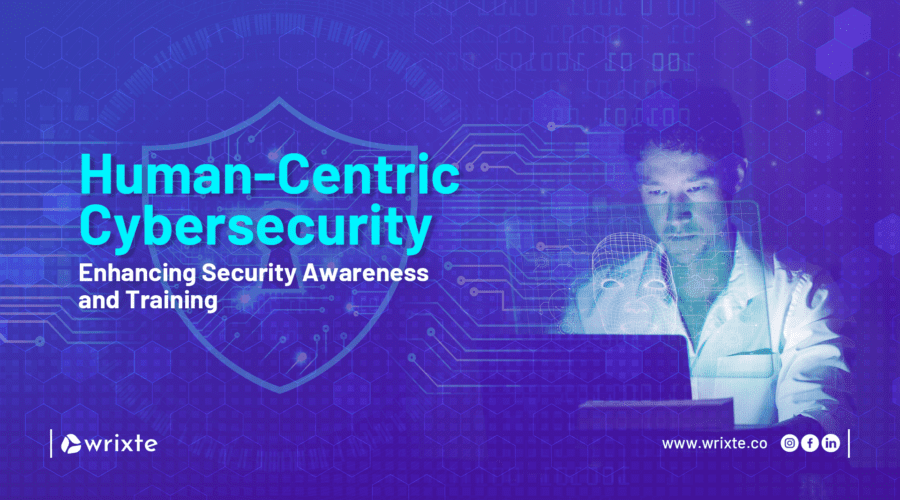As technology advances, the complexity and sophistication of cyber threats grow exponentially. While robust technical defenses are crucial, they often fall short without a comprehensive focus on the human element. This is where human-centric cybersecurity comes into play, emphasizing the need for enhancing security awareness and training to fortify the first line of defense: the users. This blog explores how human-centric cybersecurity strategies can effectively reduce the risks posed by human error and social engineering attacks.
The Human Factor: A Double-Edged Sword
Human error accounts for a significant percentage of security breaches. Phishing attacks, poor password practices, and the misuse of sensitive data often result from a lack of security awareness and proper training. However, when effectively educated and engaged, employees can transform from being the weakest link to a robust line of defense. Human-centric cybersecurity prioritizes building a security-conscious culture that empowers employees to recognize and respond to potential threats.
Beyond Awareness: The Role of Tailored Training
Traditional security training often fails to resonate with employees, primarily because of its one-size-fits-all approach. Effective training should be contextual, personalized, and interactive, focusing on the specific roles and responsibilities of each employee. For example, IT staff may need in-depth technical training, while HR teams might benefit from learning how to handle social engineering attempts targeting sensitive employee information.
Leveraging Behavioral Analytics
One innovative approach to human-centric cybersecurity is the use of behavioral analytics. By monitoring user behavior, organizations can identify anomalies that may indicate a security risk. For instance, if an employee who typically works within regular hours suddenly logs in at odd times from an unusual location, this could trigger a security alert. Behavioral analytics not only help in detecting potential threats but also in understanding user patterns to design more effective training modules.
Building a Security-First Culture
Creating a security-first culture goes beyond periodic training sessions. It involves integrating cybersecurity into the fabric of everyday operations and decision-making. This can be achieved by:
- Leadership Involvement: When executives and managers actively participate in security initiatives, it sends a strong message to the rest of the organization about the importance of cybersecurity.
- Continuous Engagement: Regular updates, interactive sessions, and gamified training can make learning about security engaging and memorable.
- Recognizing and Rewarding Security-Conscious Behavior: Acknowledging employees who demonstrate good security practices can motivate others to follow suit.
The Role of Technology in Human-Centric Cybersecurity
While the focus is on human behavior, technology plays a crucial role in supporting human-centric cybersecurity. Tools such as phishing simulators, interactive e-learning platforms, and AI-driven training solutions can significantly enhance the effectiveness of security training programs.
- Phishing Simulations: Conducting regular phishing simulations can help assess and improve employees’ ability to recognize and respond to phishing attempts.
- AI-Driven Training Solutions: AI can personalize training content based on individual learning styles and past performance, making the learning process more effective and engaging.
Addressing the Challenges
Implementing human-centric cybersecurity is not without its challenges. It requires a shift in mindset and a commitment to continuous improvement. Some of the key challenges include:
- Resistance to Change: Employees may resist new security measures if they perceive them as cumbersome or unnecessary. Clear communication about the importance of these measures and their role in protecting both the organization and the employees is crucial.
- Balancing Security with Usability: Overly stringent security protocols can hinder productivity. Striking the right balance between robust security and user convenience is essential.
- Measuring Effectiveness: It can be challenging to measure the impact of security awareness programs. Metrics such as the reduction in the number of security incidents, improved response times, and feedback from employees can help gauge effectiveness.
Conclusion
Human-centric cybersecurity is not just about protecting an organization from external threats but also about fostering a security-conscious culture that empowers employees to be vigilant and proactive. By investing in targeted training, leveraging behavioral analytics, and fostering a security-first culture, organizations can significantly enhance their cybersecurity posture. As the cyber threat landscape continues to evolve, human-centric strategies will be indispensable in building a resilient and secure digital environment.
